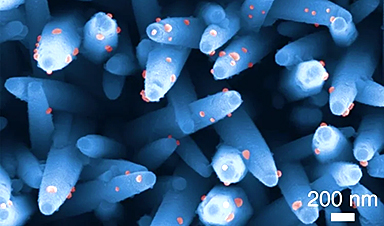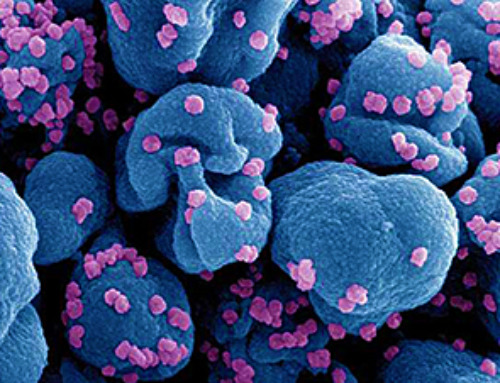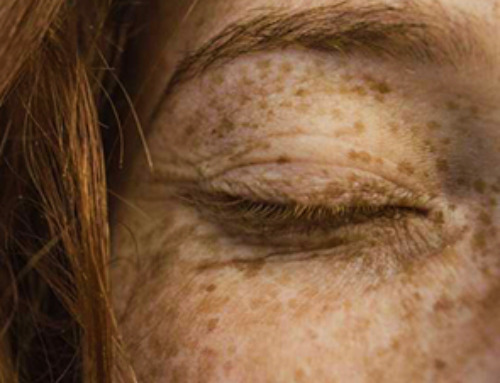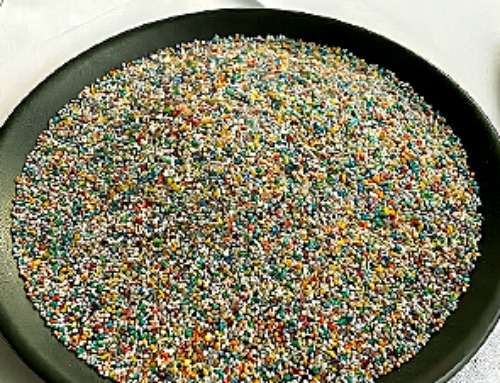A recent study conducted at Nagoya University has focussed on developing an all-in-one nanowire assay system that can capture and evaluate extracellular vesicles useful for early cancer diagnosis.
Extracellular vesicles are promising biomarkers for the early detection of cancer. Different systems are available to capture and analyze extracellular vesicles, separately.
This research was led by Associate Professor Takao Yasui of Nagoya University’s Graduate School of Engineering and his colleague Professor Yoshinobu Baba, in collaboration with Nagoya University’s Institute of Innovation for Future Society and the University of Tokyo. Scientists developed a novel analysis platform for capturing and detecting brain tumor extracellular vesicles based on nanowires at the bottom of a well plate.
Extracellular Vesicles – A Biomarker for Cancer Diagnosis
Extracellular vesicles are membrane vesicles whose diameter ranges between 30 nm and 2000 nm and contains proteins, nucleic acids, and bioactive lipids. These membrane vesicles are involved with intercellular communication and regulation of cell functions. Compared to normal cells, malignant cells (e.g., tumors) have higher extracellular vesicle secretion. Since extracellular vesicle analysis provides important information related to a disease, these are considered important biomarkers for chronic diseases, such as cancers.
Early detection of cancer improves clinical outcomes; however, this is not always possible because some types of cancer, such as brain cancer, remain asymptomatic for a prolonged period. A delayed diagnosis of a brain tumor substantially reduces the chance of the patient’s survival.
Extracellular Vesicles for Cancer Diagnosis
The new study explored the idea that analysis of brain tumor organoid-derived extracellular vesicles would enable the identification of these biomarkers for brain tumors.
Extracellular vesicles are firstly captured from biological samples using various conventional methods, such as ultracentrifugation/ differential centrifugation, immunoaffinity-based methods, polymer precipitation, filtration, aptamer-mediated sorting, and chromatography (size-based capture). After capture, these are analyzed using various immune assays, nanoplasmon-enhanced scattering assay, Western blotting after lysis treatment, and mass spectrometry, to gather important biological information.
Previously, the same team of researchers had developed a nanowire-based extracellular vesicle capture strategy from urine samples. Yasui explained why a urine sample is important. He said, “Urine tests are an effective, simple, and non-invasive method because the urine contains many informative biomolecules that can be traced back to identify the disease.”.
The zinc oxide (ZnO) nanowire system can capture extracellular vesicles based on the surface charge. This method is beneficial due to its ability to determine large numbers of microRNAs (miRNAs), simple operational process, high extracellular vesicles yield, and rapid output.
All-In-One Nanowire Assay System for Capturing and Extracellular Vesicle Analysis
To develop an all-in-one nanowire assay system, a nanowire-based capture system was combined with a conventional well plate assay for extracellular vesicle analysis. Nanowire substrates were developed by synthesizing ZnO nanowires on fused silica substrates using the hydrothermal method.
Since, compared to a weaker positively charged surface, a stronger positively charged surface can increase capture efficiency, aluminum oxide (Al2O3) was deposited on the ZnO nanowires via the atomic layer deposition (ALD) method, which developed a core-shell structure. This nanowire substrate was placed on a 24-well plate. Field emission scanning electron microscopy (FESEM) images revealed the diameter of the nanowire to be 111 nm, the height to be 1.81 μm, and the average density to be 25 nanowires/μm2.
The newly developed ZnO/Al2O3 nanowires system can capture extracellular vesicles and subsequently analyze them, i.e., detection of their membrane proteins. Initially, extracellular vesicles in urine, those in phosphate-buffered saline (PBS) and organoid-derived extracellular vesicles in culture media were incubated in the device such that extracellular vesicles could be captured on the nanowire. Subsequently, the vesicles were analyzed based on the antibody fluorescence detection method and the captured extracellular vesicle concentration in the nanowire assay system was measured.
Application of All-In-One Nanowire Assay System and Future Outlook
The newly developed all-in-one nanowire assay system was able to identify specific types of extracellular vesicle membrane proteins, i.e., CD31, CD63, and EGFRvIII, from the urine samples of patients with brain tumors. Detection of these marker proteins will indicate the presence of tumors in patients, even at the asymptomatic stage.
Yasui stated that, in the future, “users can run samples through our assay and change the detection part, by selectively modifying it to detect specific membrane proteins or miRNAs inside EVs to detect other types of cancer.” At present, the authors are focussed on advancing the device such that it can determine the expression levels of specific membrane proteins in urinary extracellular vesicles, which would enable early diagnosis of different types of cancer.
The current nanowire assay system provides a unique opportunity to create a powerful tool for the early diagnosis of cancer with high precision and accuracy.
News
Platelet-inspired nanoparticles could improve treatment of inflammatory diseases
Scientists have developed platelet-inspired nanoparticles that deliver anti-inflammatory drugs directly to brain-computer interface implants, doubling their effectiveness. Scientists have found a way to improve the performance of brain-computer interface (BCI) electrodes by delivering anti-inflammatory drugs directly [...]
After 150 years, a new chapter in cancer therapy is finally beginning
For decades, researchers have been looking for ways to destroy cancer cells in a targeted manner without further weakening the body. But for many patients whose immune system is severely impaired by chemotherapy or radiation, [...]
Older chemical libraries show promise for fighting resistant strains of COVID-19 virus
SARS‑CoV‑2, the virus that causes COVID-19, continues to mutate, with some newer strains becoming less responsive to current antiviral treatments like Paxlovid. Now, University of California San Diego scientists and an international team of [...]
Lower doses of immunotherapy for skin cancer give better results, study suggests
According to a new study, lower doses of approved immunotherapy for malignant melanoma can give better results against tumors, while reducing side effects. This is reported by researchers at Karolinska Institutet in the Journal of the National [...]
Researchers highlight five pathways through which microplastics can harm the brain
Microplastics could be fueling neurodegenerative diseases like Alzheimer's and Parkinson's, with a new study highlighting five ways microplastics can trigger inflammation and damage in the brain. More than 57 million people live with dementia, [...]
Tiny Metal Nanodots Obliterate Cancer Cells While Largely Sparing Healthy Tissue
Scientists have developed tiny metal-oxide particles that push cancer cells past their stress limits while sparing healthy tissue. An international team led by RMIT University has developed tiny particles called nanodots, crafted from a metallic compound, [...]
Gold Nanoclusters Could Supercharge Quantum Computers
Researchers found that gold “super atoms” can behave like the atoms in top-tier quantum systems—only far easier to scale. These tiny clusters can be customized at the molecular level, offering a powerful, tunable foundation [...]
A single shot of HPV vaccine may be enough to fight cervical cancer, study finds
WASHINGTON -- A single HPV vaccination appears just as effective as two doses at preventing the viral infection that causes cervical cancer, researchers reported Wednesday. HPV, or human papillomavirus, is very common and spread [...]
New technique overcomes technological barrier in 3D brain imaging
Scientists at the Swiss Light Source SLS have succeeded in mapping a piece of brain tissue in 3D at unprecedented resolution using X-rays, non-destructively. The breakthrough overcomes a long-standing technological barrier that had limited [...]
Scientists Uncover Hidden Blood Pattern in Long COVID
Researchers found persistent microclot and NET structures in Long COVID blood that may explain long-lasting symptoms. Researchers examining Long COVID have identified a structural connection between circulating microclots and neutrophil extracellular traps (NETs). The [...]
This Cellular Trick Helps Cancer Spread, but Could Also Stop It
Groups of normal cbiells can sense far into their surroundings, helping explain cancer cell migration. Understanding this ability could lead to new ways to limit tumor spread. The tale of the princess and the [...]
New mRNA therapy targets drug-resistant pneumonia
Bacteria that multiply on surfaces are a major headache in health care when they gain a foothold on, for example, implants or in catheters. Researchers at Chalmers University of Technology in Sweden have found [...]
Current Heart Health Guidelines Are Failing To Catch a Deadly Genetic Killer
New research reveals that standard screening misses most people with a common inherited cholesterol disorder. A Mayo Clinic study reports that current genetic screening guidelines overlook most people who have familial hypercholesterolemia, an inherited disorder that [...]
Scientists Identify the Evolutionary “Purpose” of Consciousness
Summary: Researchers at Ruhr University Bochum explore why consciousness evolved and why different species developed it in distinct ways. By comparing humans with birds, they show that complex awareness may arise through different neural architectures yet [...]
Novel mRNA therapy curbs antibiotic-resistant infections in preclinical lung models
Researchers at the Icahn School of Medicine at Mount Sinai and collaborators have reported early success with a novel mRNA-based therapy designed to combat antibiotic-resistant bacteria. The findings, published in Nature Biotechnology, show that in [...]
New skin-permeable polymer delivers insulin without needles
A breakthrough zwitterionic polymer slips through the skin’s toughest barriers, carrying insulin deep into tissue and normalizing blood sugar, offering patients a painless alternative to daily injections. A recent study published in the journal Nature examines [...]





















